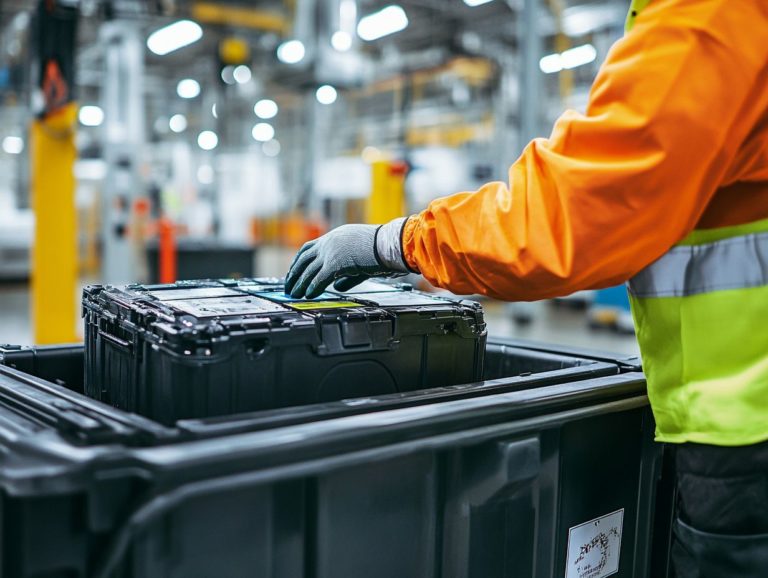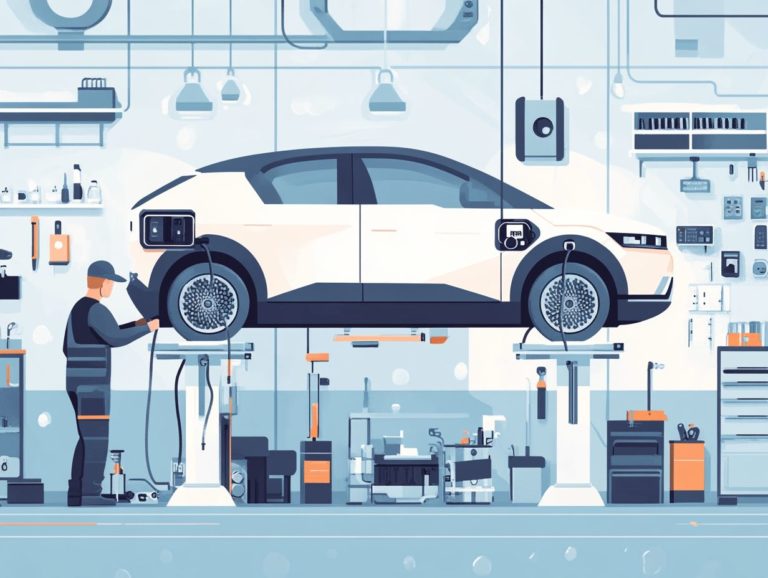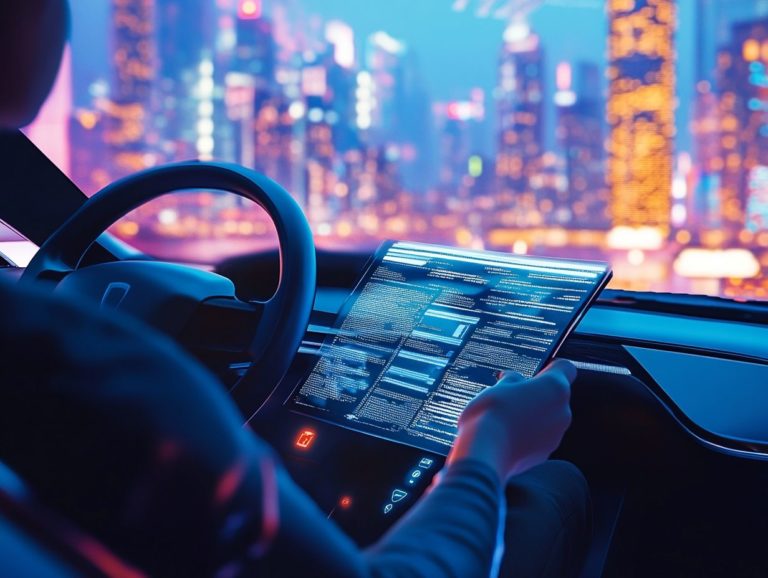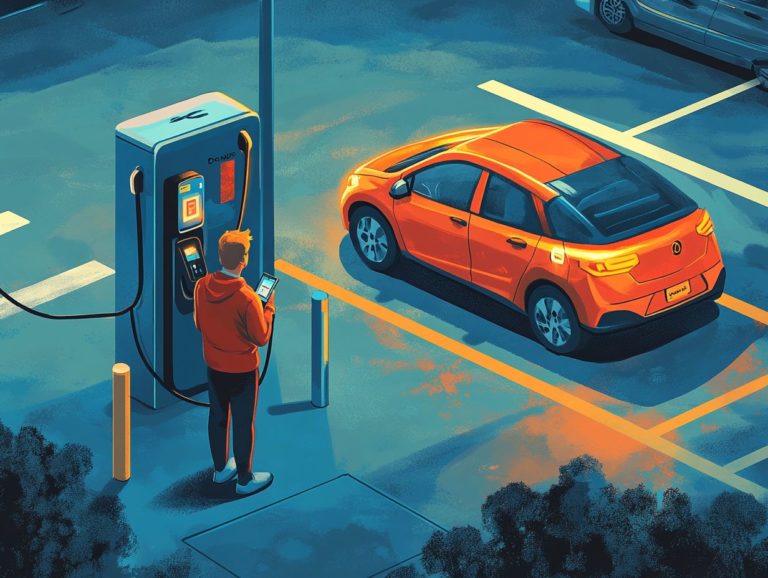How Do I Handle an EV Emergency?
Electric vehicles (EVs) are revolutionizing your travel experience, but like any form of transportation, they can face unexpected challenges. It s crucial for you to understand what constitutes an EV emergency.
This article offers valuable insights into preventing potential issues through diligent maintenance and essential safety tips. You ll find information on common emergencies, such as flat tires and dead batteries. You will also learn when to seek professional help.
Stay informed and be proactive to tackle any road situation with confidence!
Contents
- Key Takeaways:
- Understanding EV Emergencies
- Preventing EV Emergencies
- Dealing with Common EV Emergencies
- Preparing for an EV Emergency
- Seeking Professional Help
- Frequently Asked Questions
- How Do I Handle an EV Emergency?
- What should I do if my electric vehicle breaks down on the road?
- What if my electric vehicle runs out of battery in the middle of the road?
- What if I get into an accident while driving my electric vehicle?
- What if I experience a fire or explosion while driving my electric vehicle?
- What should I do if I notice a strange smell or smoke coming from my electric vehicle?
- What steps should I take if my electric vehicle malfunctions while driving?
Key Takeaways:
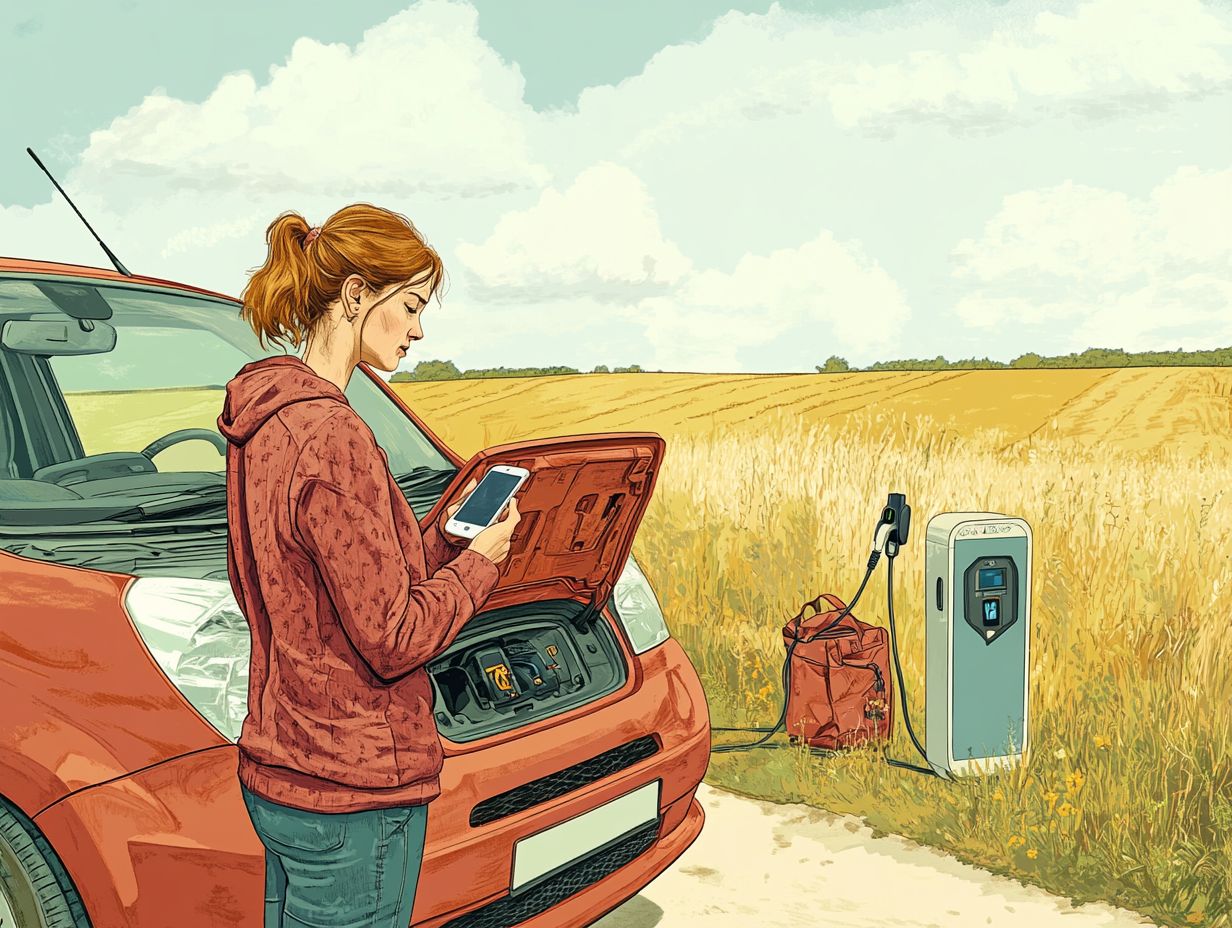
- Be proactive in preventing EV emergencies by performing regular maintenance and following safety tips.
- In the event of a flat tire, dead battery, overheating, or accident, stay calm and follow proper safety procedures.
- Make sure to have an emergency kit and know when to seek professional assistance for serious EV emergencies.
Understanding EV Emergencies
Understanding EV emergencies is essential for ensuring your safety and adhering to critical protocols, particularly when dealing with electric vehicles (EVs). Knowing how to handle EV maintenance emergencies can be crucial, as emergencies can arise in various forms, from high-voltage battery failures to accident response situations that demand swift action from first responders.
As the automotive landscape transforms with electric offerings like the Hummer EV and Chevrolet Blazer, your awareness and preparedness can significantly reduce the risks associated with vehicle movement during these emergencies. Additionally, being compliant with R100 regulations, which set safety standards for electric vehicles, in countries such as Kuwait and the Netherlands is paramount to navigating these challenges effectively.
What Qualifies as an EV Emergency?
An EV emergency can encompass a range of scenarios, from battery charging dilemmas to vehicle movement issues or any malfunction of safety features that could compromise your safety.
Imagine finding yourself with a dead battery in a remote area it’s a predicament that can leave you stranded and feeling quite vulnerable. Then there’s the risk of overheating, which affects performance and heightens the danger of fire. Recognizing those early warning signs is crucial for any driver.
Accidents, whether minor fender benders or more serious collisions, can impact not just your EV but also pedestrians and other vehicles around you. This highlights the importance of prompt emergency responses.
Being adequately prepared for emergencies knowing where to access roadside assistance and having essential contact information at your fingertips will significantly lower your risks and enhance safety for everyone involved.
Preventing EV Emergencies
Preventing EV emergencies requires you to adhere to regular maintenance tasks, implement robust safety protocols, and ensure timely firmware updates. This diligent approach will help maintain optimal device functionality and safeguard user safety, allowing you to enjoy the full benefits of your electric vehicle without unnecessary risks.
Maintenance and Safety Tips
Regular maintenance safety checks are vital for your electric vehicle, ensuring that its design adheres to safety standards and operates at peak efficiency.
These checks should encompass verifying the effectiveness of the Emergency Plug, which allows you to quickly cut off power in dangerous situations, a pivotal component that enables immediate power disconnection during emergencies. It s crucial to keep your service registration accurate and current, allowing for swift access to software updates and crucial recalls.
Gathering feedback from users can further refine safety solutions by pinpointing recurring issues and identifying preferred preventative measures. By prioritizing these elements, you can significantly enhance the longevity and reliability of your vehicle, ensuring a safer driving experience for everyone sharing the road.
Dealing with Common EV Emergencies
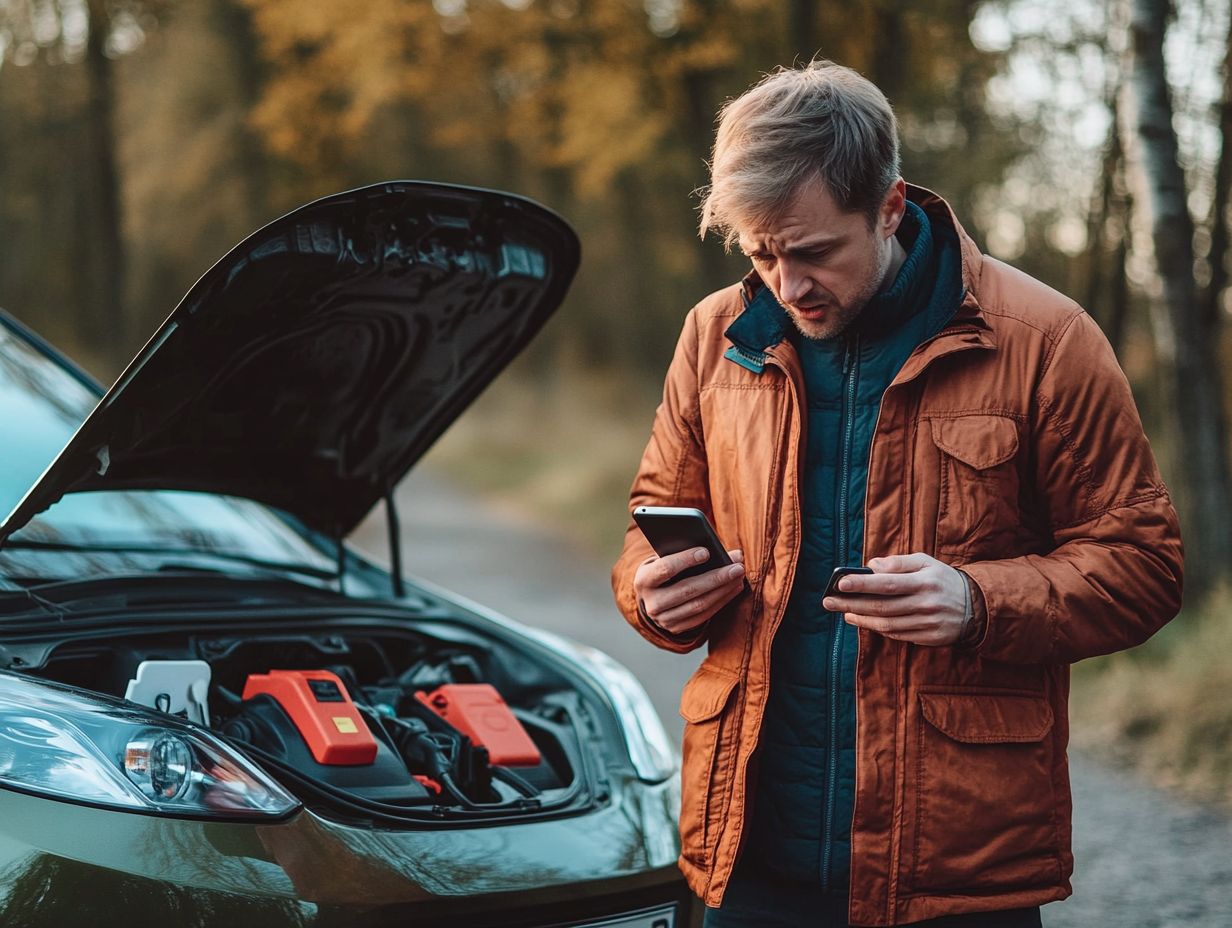
Navigating common EV emergencies demands your awareness and swift action. Whether you’re confronted with a flat tire, a dead battery, or overheating, knowing how to handle EV battery replacement is crucial, as each situation necessitates a well-defined response plan.
Being prepared enables you to handle these challenges with confidence and ease.
Flat Tires
A flat tire in your electric vehicle can be a real headache. Understanding the maintenance procedures can greatly enhance your safety during such emergencies.
To tackle this situation effectively, it s crucial to get to know the specific components and tools designed for EVs. Many electric vehicles are equipped with an Emergency Plug, which can temporarily seal small punctures. This allows you to reach a repair shop without undue stress.
When you find yourself with a flat tire, the first step is to pull over to a safe spot and switch on your hazard lights. Check your vehicle s manual for tire-changing tips, as proper techniques can help minimize the risk of further damage.
Always wear safety gear. Consider keeping essential tools and a portable air compressor in your trunk to make handling unexpected tire issues a breeze.
Dead Battery
Encountering a dead battery is a frequent challenge for EV owners, requiring a good understanding of how to charge your battery and the use of an external power supply for recovery.
In these moments, remain calm and adhere to the established steps to ensure both your safety and the integrity of your vehicle. Visual feedback systems are invaluable, enabling you to quickly diagnose battery issues and providing vital indicators about the battery’s status.
The Emergency Plug plays a key role in these scenarios, allowing you to effortlessly connect to an external power source. By following proper charging protocols, you not only safeguard the rejuvenation of your battery but also minimize potential hazards linked to improper handling.
Overheating
Overheating in electric vehicles can present significant risks, making it essential for you to pay immediate attention to safety solutions and understand the vehicle’s design that might contribute to high voltage problems.
Recognizing the signs of thermal distress is crucial for you as an owner or operator. Look out for unusual sounds coming from the battery pack or warning lights illuminating on the dashboard.
Manufacturers have equipped these vehicles with various safety features, such as temperature control systems, which actively work to regulate battery temperatures during operation. By educating yourself about best practices like steering clear of excessive fast charging and maintaining optimal ambient temperatures you can significantly enhance your vehicle s longevity.
Regular maintenance checks are also vital; they help you identify potential issues before they escalate, ensuring you stay informed and proactive about your vehicle’s health.
Accidents and Collisions
Accidents and collisions involving electric vehicles demand swift action to ensure your safety and allow first responders to assess the situation effectively.
In these critical moments, it’s vital for everyone involved to grasp the unique protocols associated with electric vehicles. Advanced safety features, such as the Emergency Plug, play an essential role in mitigating risks during emergencies. First responders are trained to locate and use this feature swiftly to disconnect the battery, significantly reducing the chances of fires or electrical shocks.
Clear communication between drivers, passengers, and emergency personnel is also crucial. Highlighting the vehicle’s electric nature and any potential hazards can enhance the safety of everyone at the scene and streamline the crisis management process. Your awareness of these factors can make a difference in ensuring a safer outcome.
Preparing for an EV Emergency

Preparing for an EV emergency means gathering crucial items for your emergency kit and familiarizing yourself with safety protocols that prioritize your well-being and facilitate effective communication with key stakeholders.
Emergency Kit Essentials
Be prepared for the unexpected your safety depends on it! An effective emergency kit for electric vehicle owners should be your go-to resource, packed with tools and supplies that enhance your safety and assist with maintenance during unexpected situations.
This kit ought to be carefully curated to include essential items specifically designed to tackle common challenges faced by electric vehicle operators.
- Basic hand tools for minor repairs think screwdrivers and wrenches.
- Safety vests and warning triangles to ensure you remain visible to other drivers.
Include visual feedback devices like portable tire inflators and jump-start units, as they can offer critical assistance when you need it most.
By putting together a comprehensive emergency kit, you not only protect yourself but also elevate your overall driving experience. This instills a sense of preparedness and peace of mind as you navigate the road.
Seeking Professional Help
Understanding when to seek professional assistance is crucial for ensuring user safety, particularly in the automotive industry.
With electric vehicle manufacturers implementing specific service registration protocols, it is essential to recognize the importance of expert guidance to navigate these requirements effectively.
When to Call for Assistance
Knowing when to seek assistance can make all the difference between a manageable situation and a full-blown emergency. This underscores the vital importance of user safety during maintenance procedures.
If you notice unusual noises coming from your vehicle or feel a dip in its performance, these might be signs of underlying mechanical issues that deserve a professional’s attention.
Those warning lights on your dashboard? They should never be brushed off they often indicate critical safety concerns that could lead to further complications if ignored.
Another scenario that calls for expert intervention is a sudden drop in fluid levels, which typically signals leaks or other potential failures. Consulting a professional not only guarantees a proper diagnosis but also ensures your safety while extending the lifespan of your machinery.
Frequently Asked Questions
How Do I Handle an EV Emergency?
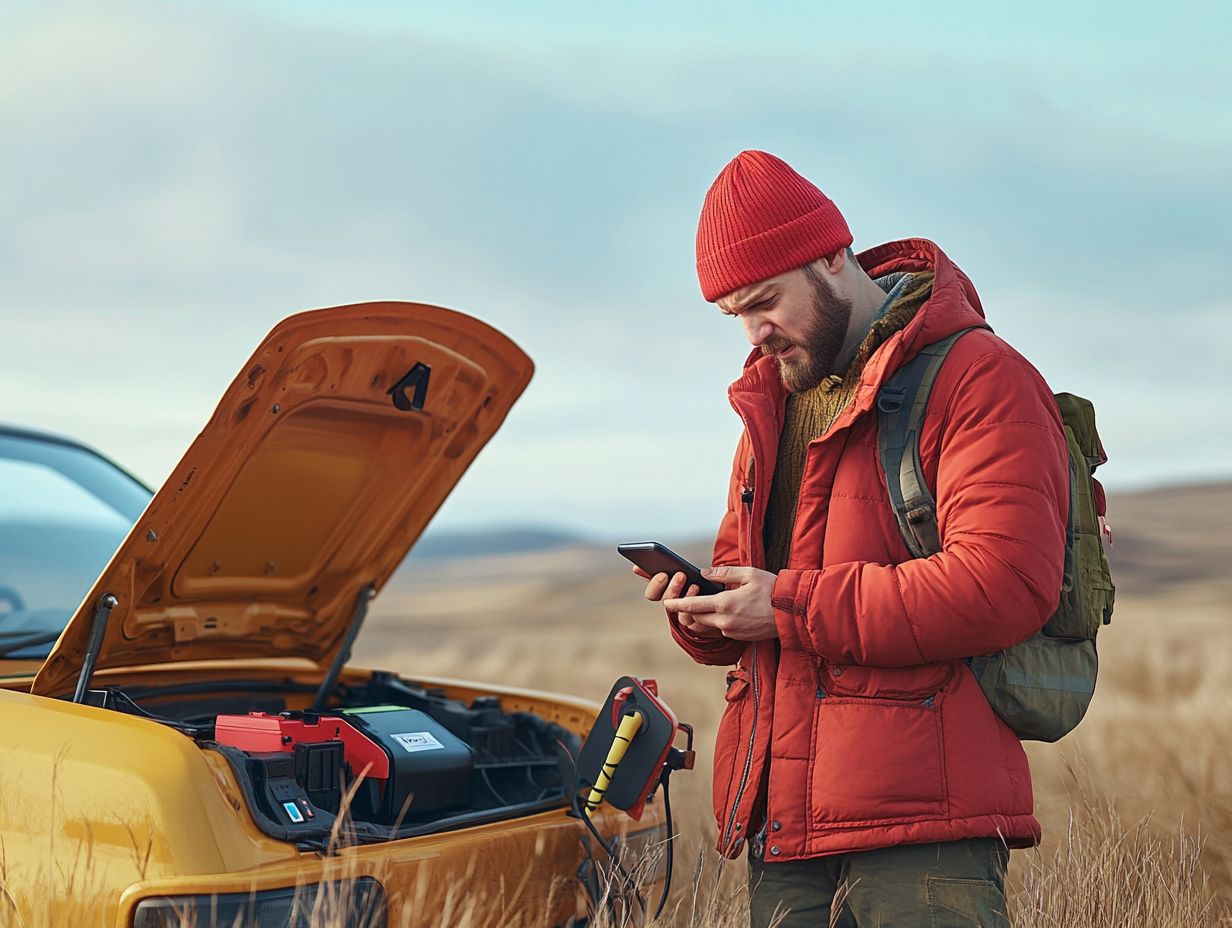
If you find yourself in an emergency situation while driving an electric vehicle, here are some steps to follow to effectively manage the situation, including insights on how to handle EV repairs effectively:
What should I do if my electric vehicle breaks down on the road?
In case of a breakdown, first, turn on your hazard lights and safely pull over to the side of the road. Then, contact roadside assistance or your electric vehicle manufacturer for further instructions.
What if my electric vehicle runs out of battery in the middle of the road?
If your battery runs out while driving, try to safely pull over to the side of the road and contact roadside assistance. If you have access to a nearby charging station, you can also try to charge your vehicle there.
What if I get into an accident while driving my electric vehicle?
If you are involved in an accident, follow standard safety procedures and call emergency services if necessary. If your electric vehicle is damaged, contact your insurance company and your electric vehicle manufacturer for further assistance.
What if I experience a fire or explosion while driving my electric vehicle?
In case of a fire or explosion, immediately turn off your vehicle and evacuate. Call emergency services and follow their instructions. Do not attempt to handle the situation yourself.
What should I do if I notice a strange smell or smoke coming from my electric vehicle?
If you smell a strange odor or see smoke coming from your electric vehicle, pull over to a safe location and turn off the vehicle. Contact roadside assistance or your electric vehicle manufacturer for further assistance.
What steps should I take if my electric vehicle malfunctions while driving?
If your electric vehicle malfunctions while driving, safely pull over to the side of the road and turn off the vehicle. Contact your electric vehicle manufacturer for further instructions on how to handle the situation.

